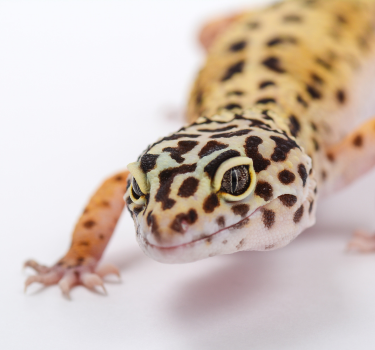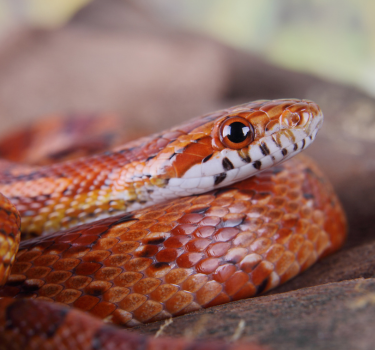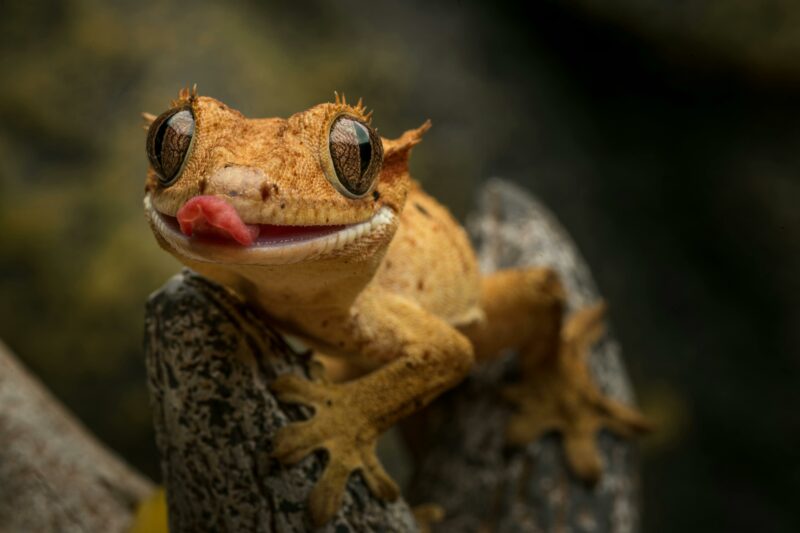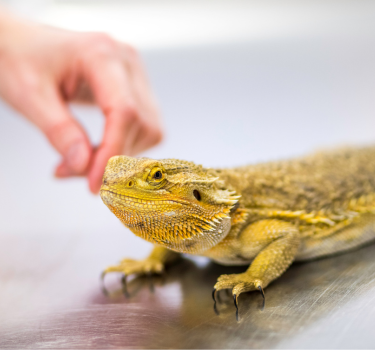Hognose Care and Husbandry
What up reptile rookies! Have you found yourself fascinated by those rad little hognose snakes recently? I sure don’t blame you – with their cute upturned noses, drama queen antics, and array of morphs, the western hognose has captivated many first-time snake owners.
Now as a beginner, the idea of choosing enclosure sizes or figuring out the perfect substrate to use might seem kinda intimidating. But have no fear! I’m here to make hognose husbandry a breeze for new keepers like yourself. Consider me your bearded dragon spirit guide into the world of hognosed shenanigans!
By the end of this guide, you’ll have a solid foundation covering everything from setting up the perfect habitat to feeding, handling techniques and more. Let’s slither on into it!
An Introduction To Western Hognose Snakes
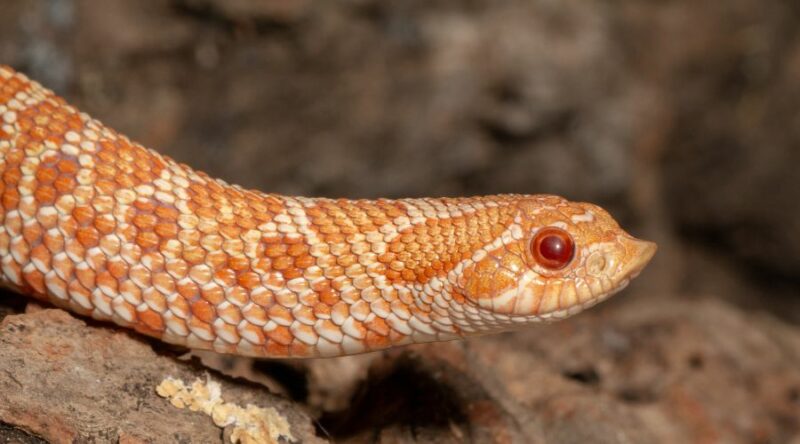
To better understand how to properly care for these marvelously melodramatic morph machines, let’s quickly cover some hognose basics:
Background On The Species’ Origins and Morphs
Western hognose snakes hail from prairie habitats ranging across much of North and South America. While fairly small in the wild, captive bred specimens benefit from consistent feedings and frequently reach lengths exceeding 3 feet.
And get this – their signature upturned “hog nose” allows expert burrowing to hunt for meals or avoid extreme weather! Ain’t nature something else?
Now western hognose color variations (or “morphs”) seemingly multiply faster than they reproduce! We’re talking lavenders, anacondas, albinos – too many stunning DNA combos to list. But just know a healthy, vibrant reptile awaits behind every color scheme.
Overview Of Adult Size, Lifespan, And General Temperament
An average adult hognose reaches 18-24 inches long and lives 15 or more years in captivity. And while males remain slightly smaller than females, both continue growing throughout life.
And fear not – despite their intimidating bluffs and shows, hognoses have remarkably docile temperaments when properly socialized. Their seemingly angry hisses and neck puffing almost always prove to be just hot air! With time and regular handling, they tolerate interaction quite well.
Alright! Now that you know some background on the magnificent western hognose, let’s get that enclosure setup squared away.
Hognose Snakes make great pets. Checkout these other articles about beginner pets!
Preparing Your Hognose Snake's Enclosure

When designing your snake’s habitat, focus on ensuring they feel secure while also allowing for proper thermoregulation and exercise. Here are housing fundamentals to provide for their basic needs:
Recommended Enclosure Sizing
Now neonates and juvenile hognoses will thrive in smaller 10-20 gallon tanks at first. But these feisty foragers grow quicker than you think! Plan to move them into adult enclosures by 12 months old.
For that, a 20-40 gallon tank with more floor space than height allows ample room for the largest specimens exceeding 3 feet long. Just be sure to have a securely fastened top – no Houdini escapes allowed!
Substrates To Use And Avoid
Affordable options like reptile carpet and newsprint work fine temporarily. But long-term, loose substrates that enable burrowing like orchid bark or coconut fiber are preferable. Just be absolutely sure to avoid cedar, pine or any aromatic wood shavings. This can cause deadly respiratory infections!
I suggest a 4-6 inch substrate depth allowing them to fully immerse while digging. Not only does this mimic natural behaviors, but a nice shapeable floor lets you vary “terrain” assisting their sheds. Speaking of which…
Heating/Lighting Basics
Now unlike some fellow cold-blooded camaraderie seeking metabolic basking, hognose heating needs are pretty straightforward:
- Ambient hot side ground temperature: 88-90 F
- Cool side ground temperature: 75-80 F
This thermal gradient allows necessary self-regulation through movement. Use an under tank heating pad on one “hot” side rather than an overhead heat lamp. This facilitates belly warmth digestion and digestion critical for these voracious appetites!
Now lighting is important primarily for maintaining cycles. Provide 12-14 hours of low wattage UVB exposure daily to mimic natural photoperiods. Just be sure overly bright lighting doesn’t overheat their enclosure.
Got all that? Fabulous! With the habitat fully prepped, let’s move on to keeping your snake healthy and happy.
Caring For Your Western Hognose
Alright rookie reptile wrangler – your hognose home is fully furnished! Now let’s cover best practices caring for your snake covering feeding, shedding assistance and more husbandry fundamentals:
Humidity And Temperature Guidelines
Generally just 10-30% humidity works fine since hognose natural arid habitats avoid tropical levels. Just ensure their water bowl always remains full for proper hydration, and spray down the enclosure once in awhile allowing evaporation.
And regarding heating, use a quality thermostat probe carefully monitoring for those ideal 88-90F hot spot temps. Avoid uneven overheating as hognoses lack heat sensing pits some advanced snakes possess.
Feeding Techniques And Recommended Schedules
Now fair warning: hognose snakes often hunger strike when young requiring scenting tricks with toad or egg. But utilize these specialized feeding guides, and they’ll usually convert to rodents.
Once eating, provide appropriately sized feeder mice starting with fuzzy hoppers. Generally offer pre-killed rodents once every 5-7 days for juveniles, scaling back to 10-14 days for adult snakes.

And utilize feeding tongs – not only for safety, but cueing allows them to appropriately switch into “hunting mode” when mealtime comes. This kickstarts their picky appetites.
Shedding – What To Expect And How To Help
Like all snakes, hognose regularly shed their skin as they grow. Expect this once a month when young, reducing to every 2-3 months for adults.
When in “blue phase” pre-shed, increase humidity levels and provide rough surfaces helping them slither away their flaky dermis. Consider a moist hide box as a particular shedding sanctuary!
Alright awesome! Our scaly buddies are totally taken care of now living the dream hognose lifestyle. Let’s chat actual interaction and removing those silly misconceptions about their supposedly nasty dispositions!
Handling And Interacting With Your Snake
While their elaborate bluffing displays can seem intimidating at first, commonly portrayed “mean hognoses” simply stem from fear. But utilize trust building steps patiently and they make fabulous captives!
Taming Your Hognose And Handling Basics
When first homed, give at least 2 full weeks to acclimate before attempting handling. Then keep early sessions brief, gently scooping underneath to support their body rather than tail grabbing. Slow lifts above their enclosure also seem less threatening than reaching inside to snatched suddenly.
Aim for just 5-10 minutes of handling once or twice weekly. If showing signs of stress like hissing or rolling over playing dead, promptly return them gently to their habitat and attempt interacting later. With time and patience though, most calm significantly enjoying human company!
Interpreting Hognose Snake Body Language
Now new hog owners often misinterpret normal tongue flicking as a sign of anger – quite the contrary! Just like frequent yawning doesn’t indicate sleepiness to us, “tasting” the air merely assists their sensory perception identifying surroundings, not aggression.
Additionally, those cute little neck puffing displays are all bluff – quite literally hot air! Sure they’ll hiss, strike and even play dead, but consider it mostly drama as they ultimately remain harmless.
So in reality, a calm, relaxed hognose loosely coiled or slowly exploring their enclosure shows contentment. Recognizing these de-escalated body language clues lets you identify when handling will go smoothly.
Ensuring Your Snake Stays Comfortable With Handling
For continual stress-free handling, focus on light petting strokes rather than restraint. Supporting below their belly feels more secure, lowering the perceived risk of aerial predation triggering defensiveness.
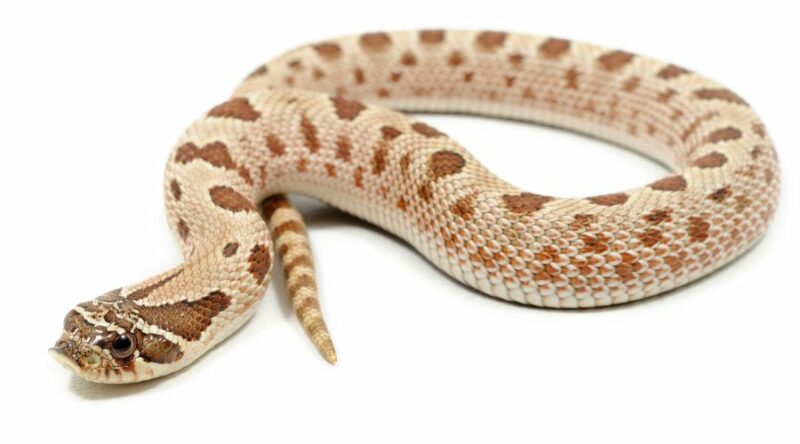
Also vary the locations and distances of interaction – that is, sometimes handle encaged with the door open versus always immediately lifting out. This associates your presence even externally to their habitat as positive, familiar company worthy of trust.
Well there ya have it friends – from unboxing day to handling techniques, everything required giving your western hognose snake its best life! I hope you feel totally prepared now to take on hognose ownership with confidence.
When applied properly, the care insights we covered today will have that little hogdozer not just surviving, but downright thriving for years to come. So here’s to many more happy, healthy days full of hilarious hognose hijinks ahead!
Now then – before we wrap up, let me assuage some common concerns new keepers tend to have:
Frequently Asked Questions About Caring For Western Hognose Snakes
Plan for an enclosure at least 30” x 12” x 12” for most adult hognoses, increasing floorspace if exceeding 3’ long. Remember to provide 4-6” of loose substrate facilitating natural burrowing.
Brief hunger striking when young is very common - try scenting tricks before panicking. Utilize the specialized guides linked earlier and they typically convert to rodents. If an adult suddenly stops eating however for multiple weeks, consult an exotic vet.
Absolutely - neither are signs of aggression, simply fear responses when startled or establishing territory. Remain calm and don’t invade their space during these bluffing displays. With proper acclimation, hissing and striking generally diminishes dramatically.
1-2 handling sessions per week for 5-10 minutes is ideal. Limit it so they don’t become overly stressed or aggressive. Pay close attention to their body language when interacting so you can identify signs to promptly return them to their enclosure.
Conclusion

Well that wraps up or complete western hognose beginners guide! Hopefully you now feel 100% confident about bringing one of these magnificent morph machines into your home. When applied properly, everything we covered today will set you up for success caring long-term for these hilarious hognoses!


